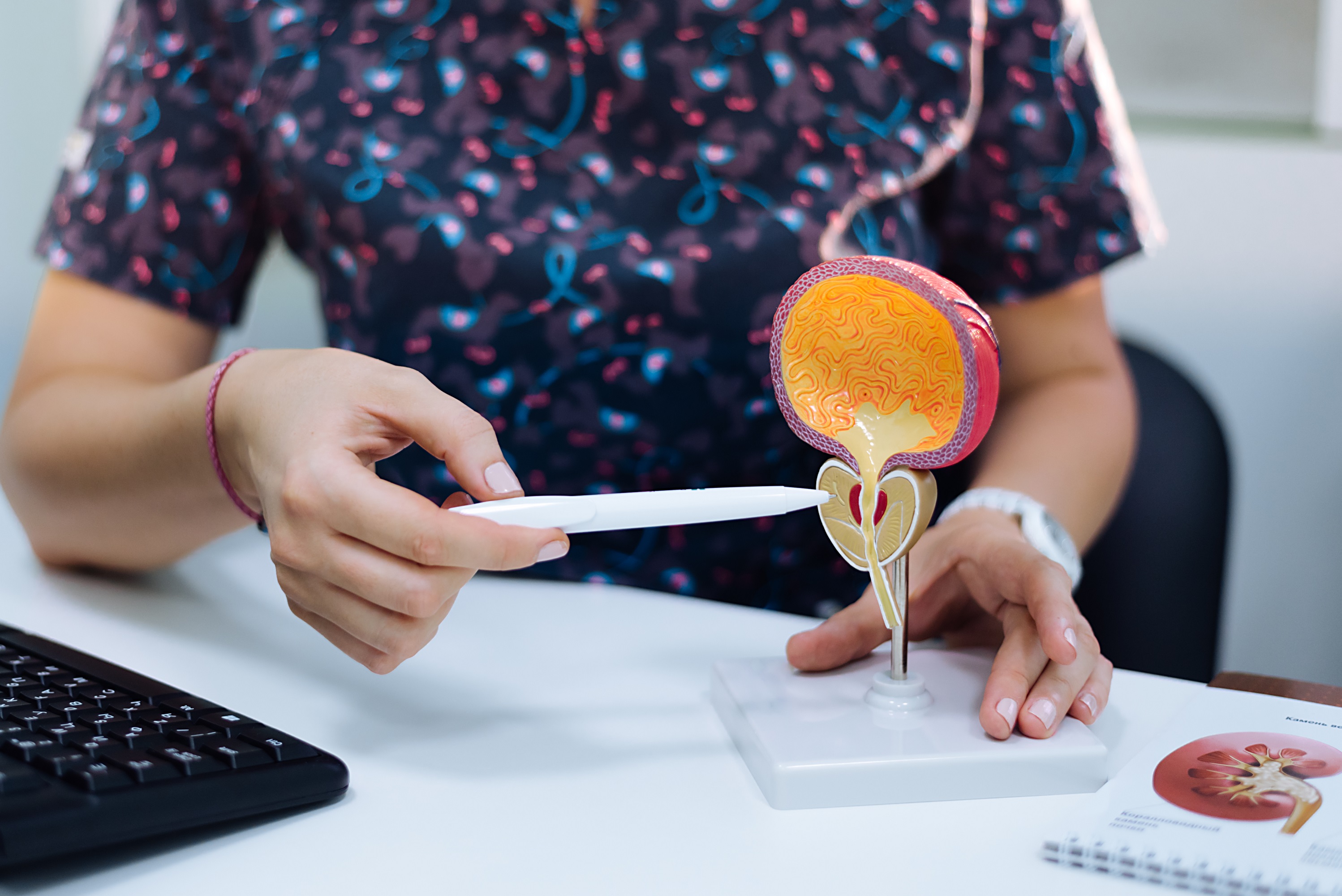How to Shrink Your Prostate

June 23, 2022
Benign prostatic hyperplasia (BPH)—a condition in which excess prostate tissue causes uncomfortable symptoms for many older men—is the most common reason men see a urologist. About half of all men ages 51–60 develop BPH, and the incidence rises with each decade of life. Some 30–50 million men in the United States have BPH.
It causes symptoms that impair quality of life, such as trouble urinating, feeling like they cannot fully empty the bladder and needing to urinate frequently. On top of that, these symptoms—which lead to multiple overnight trips to the bathroom—can impact sleep.
What options are available to treat BPH, and which is right for you?
“A wide variety of treatments are available to address an enlarged prostate, from medication to surgery,” says Michael Stifelman, M.D., chair of Urology at Hackensack University Medical Center. “Your doctor will work with you to identify the best approach based on a number of factors, including your age, the size of your prostate, and how much discomfort or pain you are experiencing.”
Wait-and-see Approach
If you can live with your symptoms, you might decide to postpone treatment and instead adopt a few lifestyle changes to find relief. Those changes may include:
- Drinking less liquid before bedtime.
- Consuming less alcohol and caffeine generally.
- Avoiding over-the-counter medications that contain decongestants or certain antihistamines that can exacerbate prostate problems.
“If you decide to postpone treatment, it is important to have periodic communication with your doctor to monitor your condition,” says Ravi Munver, M.D., vice chair of Urology and division director of Minimally Invasive and Robotic Urologic Surgery at Hackensack.
Medications
Most men with BPH actively manage their condition with medications. These include:
- Alpha blockers: While alpha blockers don’t change the size of the prostate, they relax the muscles within the bladder and prostate, which makes it easier to urinate.
- 5-alpha reductase inhibitors: These medications stop the body from creating certain hormones that cause the prostate to enlarge.
- Medications used to treat erectile dysfunction: Certain medications affect the smooth muscle in the bladder and prostate, which can help relieve BPH symptoms.
Surgery
The most common surgical approaches are transurethral resection of the prostate (TURP), in which the prostate tissue is removed through the urethra, and Greenlight Laser therapy, which vaporizes prostate tissue. Both treatments may cause retrograde ejaculation, in which semen backs up into the bladder when a man ejaculates. In the case of laser treatment, as many as 90% of patients may experience this side effect.
Urologists at Hackensack have become the first in northern New Jersey to offer an innovative treatment for BPH that uses a high-intensity waterjet to remove (ablate) excess prostate tissue that causes the uncomfortable symptoms. Called Aquablation®, the therapy is an option for men whose prostate enlargement cannot be effectively treated using prostate-shrinking medications. Aquablation is performed using a robotic surgical platform, guided by real-time imaging to deliver treatment with extraordinary precision.
Aquablation is indicated for any man whose prostate is causing an obstruction and who cannot achieve relief with medication or does not want to take these drugs. "Aquablation is as effective as these other treatments but with fewer side effects, including only about a 10 percent risk of retrograde ejaculation," Dr. Munver says. "Because it is performed using a surgical robotic system with ultrasound guidance, it can be completed more rapidly and with a high level of precision that is reproducible from surgeon to surgeon.”
Here's how it works:
- The patient is under anesthesia.
- An ultrasound probe is inserted into the patient's rectum to produce clear real-time images of the prostate. The addition of ultrasound imaging enables the surgeon to map the parts of the prostate to remove and the parts to avoid.
- The Aquablation scope is inserted into the urethra.
- When ready to begin, the surgeon presses on a pedal and the Aquablation system advances to the prostate, removing the prostate tissue that has been mapped out.
- Depending on the size of the prostate, the procedure may take as little as 15 minutes. The patient typically stays in the hospital overnight with a urinary catheter and may go home as soon as the next day. Patients report feeling a reduction in BPH symptoms right away and are able to go off their BPH medications. Aquablation achieves years of prostate relief.
Next Steps & Resources:
- Meet our sources: Michael Stifelman, M.D., and Ravi Munver, M.D.
- To make an appointment with a urologist near you, call 800-822-8905 or visit our website.
- Learn more about urology services at Hackensack Meridian Health
The material provided through HealthU is intended to be used as general information only and should not replace the advice of your physician. Always consult your physician for individual care.








